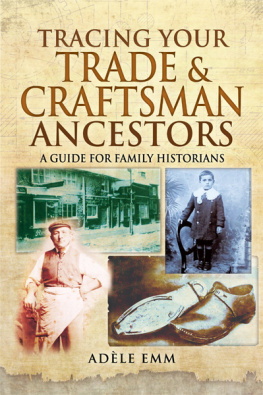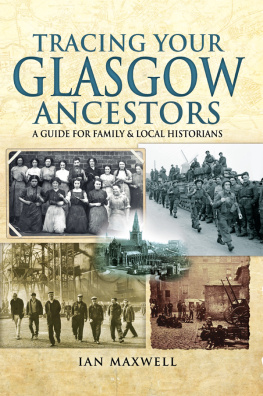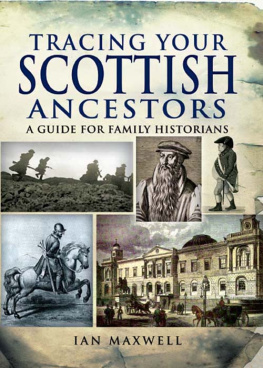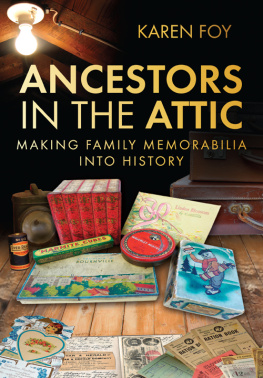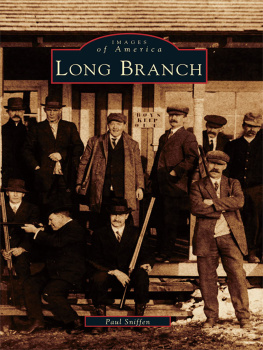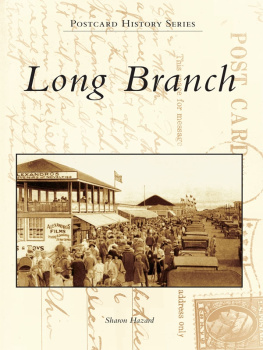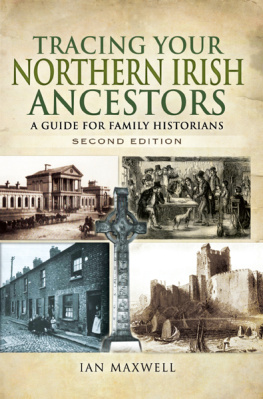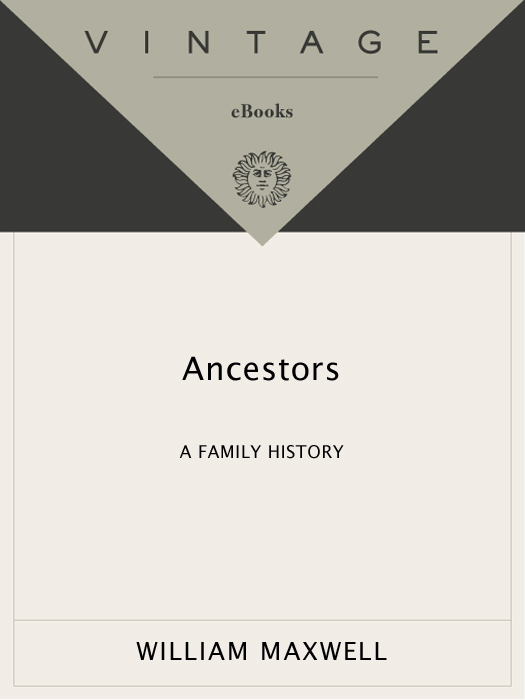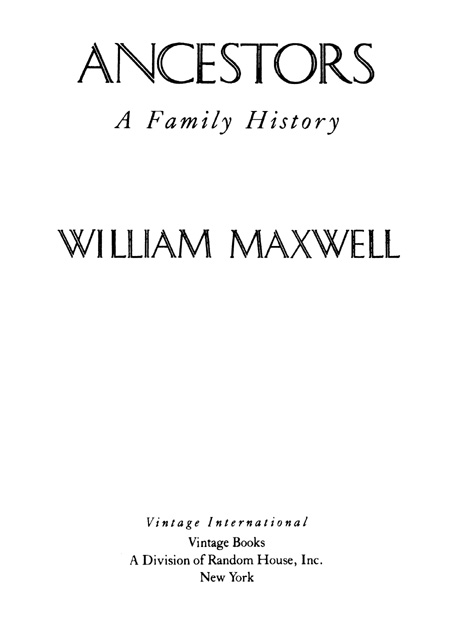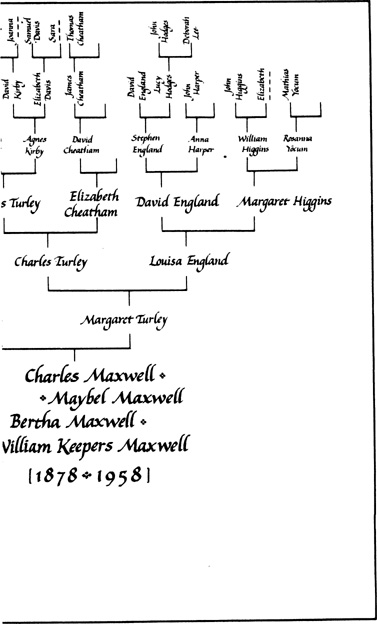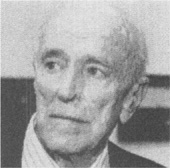
W ILLIAM M AXWELL
ANCESTORS
William Maxwell was born in 1908, in Lincoln, Illinois. When he was fourteen his family moved to Chicago and he continued his education there and at the University of Illinois. After a year of graduate work at Harvard he went back to Urbana and taught freshman composition, and then turned to writing. He has published six novels, three collections of short fiction, an autobiographical memoir, a collection of literary essays and reviews, and two books for children. For forty years he was a fiction editor at The New Yorker. From 1969 to 1972 he was president of the National Institute of Arts and Letters. He has received the Brandeis Creative Arts Award Medal and, for his novel So Long, See You Tomorrow, the American Book Award and the Howells Medal of the American Academy of Arts and Letters.

INTERNATIONAL
BOOKS BY W ILLIAM M AXWELL
All the Days and Nights: The Collected Stories (1995)
Billie Dyer and Other Stories (1992)
The Outermost Dream (1989)
So Long, See You Tomorrow (1980)
Over by the River and Other Stories (1977)
Ancestors (1971)
The Old Man at the Railroad Crossing (1966)
The Chteaux (1961)
Stories (1956)
(with Jean Stafford, John Cheever, and Daniel Fuchs)
Time Will Darken It (1948)
The Heavenly Tenants (1946)
The Folded Leaf (1945)
They Came Like Swallows (1937)
Bright Center of Heaven (1934)

FIRST VINTAGE INTERNATIONAL EDITION, JANUARY 1995
Copyright 1971 by William Maxwell
All rights reserved under International and Pan-American Copyright
Conventions. Published in the United States by Vintage Books, a division of
Random House, Inc., New York, and simultaneously in Canada by Random House of
Canada Limited, Toronto. Originally published in hardcover by
Alfred A. Knopf, Inc., New York, in 1971.
Library of Congress Cataloging-in-Publication Data
Maxwell, William, 1908
Ancestors: a family history/by William Maxwell.
p. cm.
Originally published: New York: Knopf, 1971.
eISBN: 978-0-307-48145-0
1. Maxwell family. I. Title.
[CS71.M465 1995]
929.20973dc20 9431109
Author photograph Dorothy Alexander
v3.1
For my cousin Mimi Miller,
who provided me with a genealogical structure
to hang the family stories on
most affectionately.
Contents
1
My Grandfather Maxwell was a lawyer in Lincoln, Illinois, and one of his clients, out of affection for him, brought back from a visit to Scotland a sepia photograph of Caerlaverock Castle. This ruined fortress is the ancestral seat of a Scottish family of some importance, members of which have held the titles of earl of Morton, earl of Nithsdale, Lord Maxwell, and Lord Herries. I dont know what place of honor the photograph occupied in my grandfathers house or office, for he died before I was born. During my childhood it hung over the horsehair couch in my Aunt Maybels sitting room. When I was tired of reading I used to lie on the couch and stare at it. Steeped in storybooks, I expected history to show, like emotion on a human face, and it did not seem possible that any splendor had ever fallen on these particular castle walls. Instead of a proper drawbridge there was a light wooden bridge, painted white, with railings, as if it were a building in a public park. The castle itself appeared to be damp and mouldy and in the middle of nowhere, and I found it hard to imagine anyone living in it. It was referred to in the family as the Maxwell castleproudly, but also as if that was all there was to know about it. I didnt think to ask somebody where it was.
My ignorance lasted about forty-five years, until my daughter Kate at the age of ten took The Scottish Chiefs out of her school library and when she was a few pages into it raised her head to ask a question about Scottish history. I had been watching her with pleasure. At about that same age I read and reread this rather stilted and old-fashioned novel, which is about a lost causethe insurrection led by Sir William Wallace against the English king, Edward I. The moment he was successfulat one point he drove the English entirely out of Scotlandthe Scottish nobles either deserted his banner or divided his councils by their jealousy. They perjured themselves, they changed sides again and again. Even Robert the Bruce. Most of all Robert the Bruce. Wallace alone never wavered, a boys hero that no historian has ever had to apologize for.
I got up and went to the bookcase and took down Volume I of Greens A Short History of England. As I was turning the pages of the section on the conquest of Scotland, to my astonishment I came upon the Maxwell castle. There was no mistaking it, even though the castle in the engraving was only an inch and a half high and it was not the view in the photograph but from the other side. Furthermore, since the caption under the engraving read, After J. M. W. Turner, I was obliged to conjure up a little man with a hook nose, in an ill-cut brown tailcoat, with very small hands and feet, setting up his easel where there was a good view of the castle and the plain.
Someone I know went to Caerlaverock Castle two or three years ago and, discovering later that I was interested in it, dug up the Ministry of Public Building and Works Official Guidebook sold at the castle gate. From this I learned, for the first time, that Caerlaverock is triangular in shapethe photograph didnt show itwith four big round towers and two moats, one inside the other. It stands on a peninsula of the Solway, which in Medieval times was one of the main highways into Scotland. It was built toward the end of the 13th century, probably by the English to use against the Scots, but fell into their hands. In 1300 Edward I led an English army into Scotland for the siege of Caerlaverock. There exists a rhyming account of this incident, in Old French, and I am indebted to the Guidebook for the following passage from it. Even though it is a translation, it has an eerie quality. It is not just a written description but a voice speaking, from such a remote past, and in the special and highly characteristic language of that past: Caerlaverock was so strong a castle that it feared no siege before the king came there, for it would never have had to surrender, provided it was well supplied, when the need arose, with men, engines and provisions. In shape it was like a shield, for it had but three sides round it, with a tower at each corner, but one of them was a double one, so high, so long and so wide, that the gate was underneath it, well made and strong, with a drawbridge and a sufficiency of other defenses. And it had good walls, and good ditches filled to the brim with water. And I think you will never see a more finely situated castle, for on the one side can be seen the Irish Sea, towards the west, and to the north the fair moorland, surrounded by an arm of the sea, so that no creature can approach it on two sides, without putting himself in danger of the sea. On the south side it is not easy, for there are many places difficult to get through because of woods and marshes and ditches hollowed out by sea where it meets the river.



